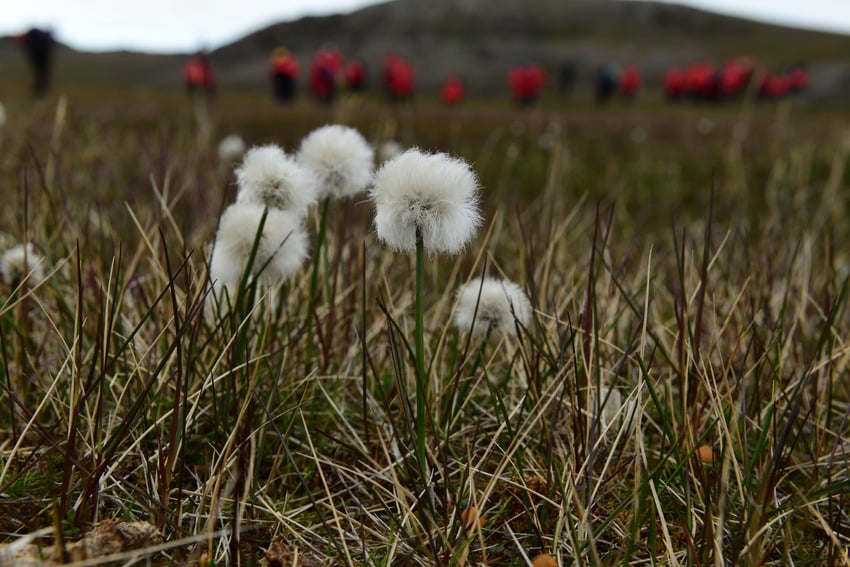What Plants Grow in the Arctic Tundra?
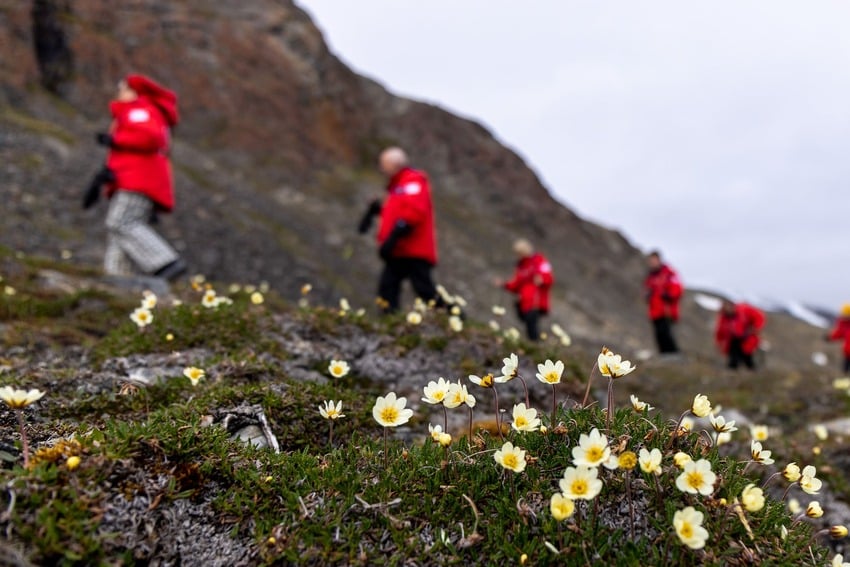
Only the toughest adventurers survive in the Arctic, and that’s also true for plant life! The Arctic tundra is known as the coldest biome on the planet and a difficult place to thrive for plant and animal life. Bitter cold winters, short summers, strong winds, rain, snow and ice shape the unique landscape of the Arctic and its flora and fauna. Only perfectly adapted plant species have a chance to grow here.
How do plants thrive so far north, just below the ice caps? Find out which species can handle these extreme conditions and learn how they are perfectly adapted to their harsh environment.
The Remarkable Plants of Svalbard and Greenland
How can plants survive in such a cold place? With only about 650km (400 miles) separating it from the North Pole, Svalbard features an incredible tundra ecosystem, with a perfectly adapted flora. While there are no trees on Svalbard, tree growth in Greenland has been actively supported by the local population since the 1890s. Over the past decade, thousands of trees native to the region have been planted in Greenland, though the only natural occurring forest is located in the Qinngua Valley.
Arctic plants are masters of survival. They rely on a shallow root system to avoid permafrost damage. Small and waxy leaves preserve moisture, the fine hairs on their stems retain heat and cup-shaped flowers channel a maximum amount of sunlight during the short summer seasons. Did you know that Arctic tundra plants can even regrow when they have dried out completely? Once the snow and ice melts, the moisture can bring the plants back to life!
Ready to discover these incredibly tough plants? Join a real polar expedition cruise to Svalbard and Greenland to see them in their natural environment! Summer cruises are an extra treat – that’s when the tundra is in full bloom! Explore the incredible landscapes of the high north with a professional expedition team, hike ashore and take Zodiac cruises. And for now, as a little teaser, read on to learn about our favorite Arctic plants and their unique characteristics.
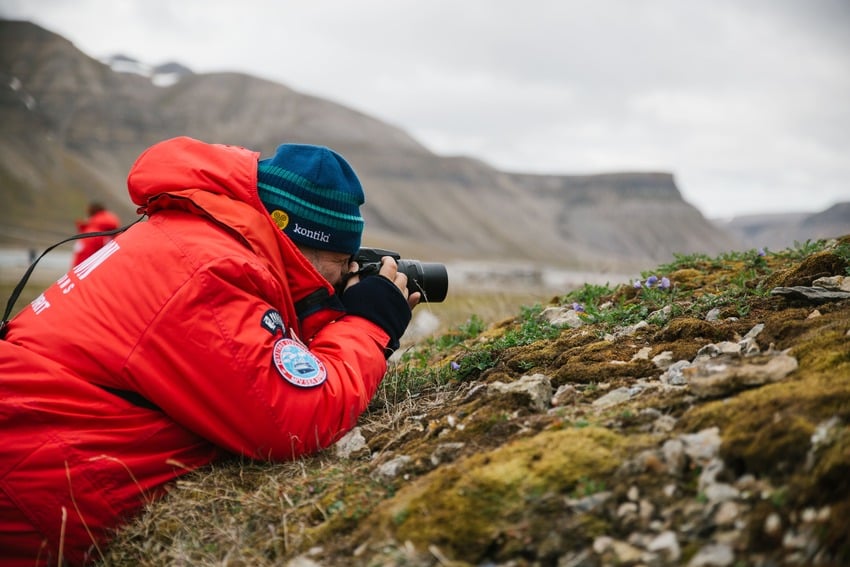
Yellow Marsh Saxifrage
During the blooming season (July to August), you can see these bright yellow flowers all across Svalbard and Greenland. As a perennial herb, it regrows each season from its own roots and reaches around 5-30cm (2-12 inches) in height. Their fruit capsules produce seeds and their yellow flowers tend to blossom rather late in the season. The moist Arctic tundra ecosystems are the preferred habitat of saxifrages. While you may enjoy the beautiful bright colors of their flowers, don’t expect a pleasant fragrance: yellow marsh saxifrages are known for their repulsive goat-like smell!
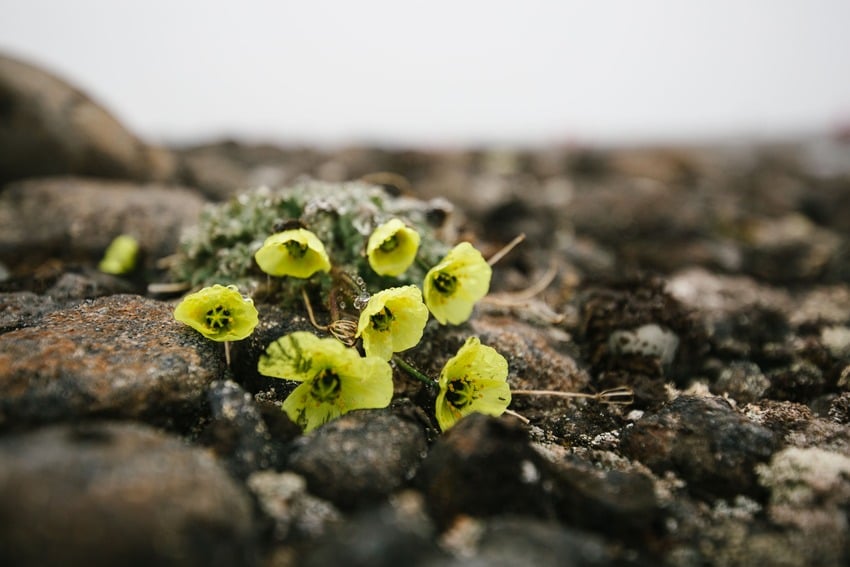
Purple Saxifrage
These purple flowers are common in the Arctic and mountainous zones of the Earth. At around 3-5cm (1.2-1.9 inches) in height, their woody branches grow by spreading across the ground. They are a low-growing species with small rounded leaves. Purple saxifrages are one of the first flowers to grow as soon as the snow and ice melt. With snow melting at different times in different parts of the tundra, you can see them blooming throughout the entire summer. Arctic hares and ground squirrels love to feed on purple saxifrage. And did you know that the sweet blossoms are also edible for humans? Inuit value them as a source of Vitamin C.
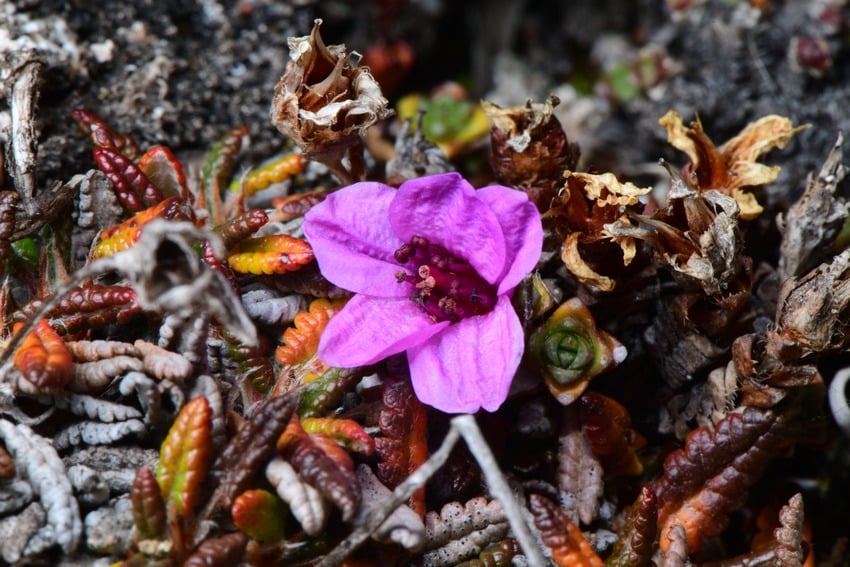
Arctic Poppy
Arctic poppies are perfectly adapted to survive in cold Arctic temperatures. The flowers are white and yellow, reaching up to 25cm (9.8 inches) in height. The stems are covered with small hairs, which help to retain heat. You’ll usually find them growing in rock crevices. They grow throughout the northern regions, and in the United States, they can even be found in the Rocky Mountains and northern New Mexico. Arctic poppies in Svalbard are usually referred to as Svalbard poppies and are the national flower of the archipelago. And did you know that this species is the northernmost plant in the world, growing at a latitude of 83 degrees north (at the northern tip of Greenland)?
Labrador Tea Shrub
This perennial shrub is native to the Arctic and you’ll find it in places like Canada, northern Norway, Greenland, Svalbard and northern Alaska. This shrub reaches a height of up to 90cm (3 feet) and can be found in swamps and wetlands. Labrador tea shrubs know how to adapt to frigid temperatures! In southern tundra zones they grow straight, maximizing exposure to the sun, while further north they grow closer to the ground to avoid harsh winds.
Mountain Sorrel
Growing in dense tufts, you’ll find them in the world’s tundra and mountain zones. At up to 20cm (8 inches) in height, you can easily recognize mountain sorrel by their kidney-shaped leaves, reddish stems and grouped flowers, which are first green and turn red later in the season. It’s a perennial herb and widespread throughout the Northern Hemisphere. Mountain sorrel prefers wet and rocky slopes, as well as snowfields to grow. In order to thrive in permafrost regions, this mountain sorrel uses its shallow roots to absorb nutrients and to attach itself to the soil. Need a vitamin boost? Its leaves contain a decent amount of vitamin C and are edible. You can also ferment the leaves into sauerkraut and use it during the dark Arctic winter months as a vitamin source.
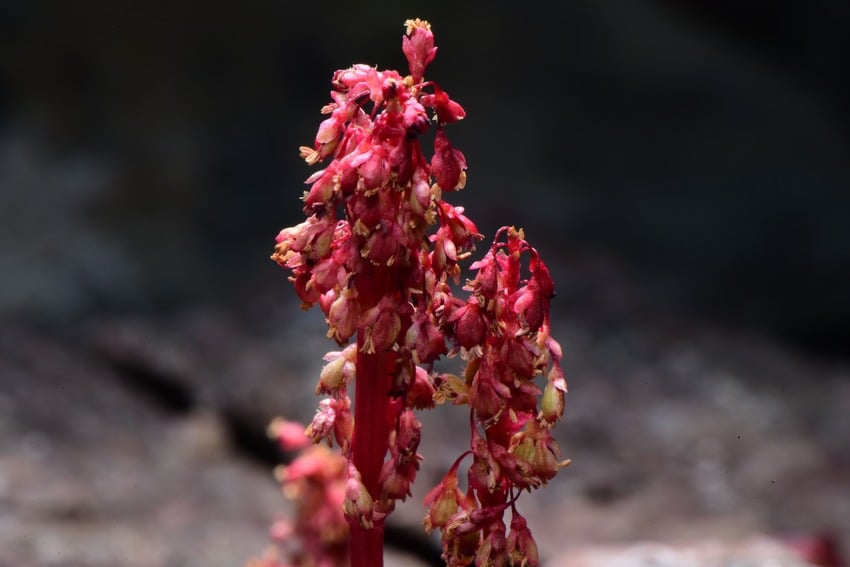
Dwarf Birch
This shrub, which has small, toothed leaves, can be found in the Arctic areas of North America, Asia and Europe (including Svalbard). In comparison to other birch species, dwarf birches only reach a height of around 1-1.2m (ca. 40 inches). Did you know that these dwarf trees can withstand temperatures as low as -45C (-49F)? Embedded in a cover of snow, they conserve heat and shelter against severe temperature lows.
Arctic Willow
At around 15cm (6 inches) in height, this shrub can be found in the world’s tundra zones and the northern US west coast. It features oval-shaped leaves with small spots on them and blooms dark brown to pink during the spring. These plants are a very important food source for musk oxen, Arctic hares and reindeer. In Inuit culture, Arctic willow is used as natural medicine against toothache, bleeding and diarrhea. It also contains a high amount of vitamin C and has a very sweet taste.
Moss Campion
This small mountain-dwelling wildflower is common in the tundra areas around the globe. The plant forms dense carpet-like structures in bright green, with small, pink flowers. Moss campions are usually only around 15cm (2-6 inches) in height, but form cushions that can range from a few cm up to 30cm (1 foot) in diameter. This cushion forms its own microclimate to keep the plant warm and protected from very low temperatures.
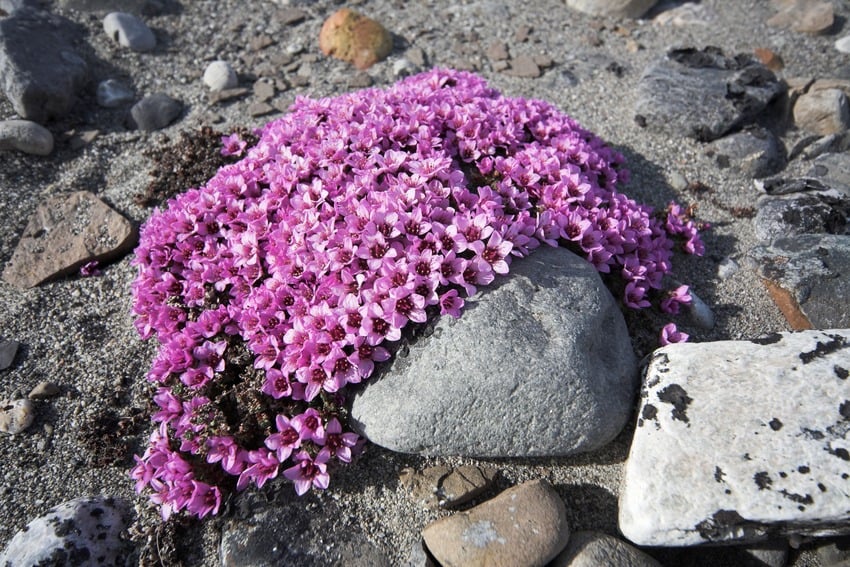
Bearberrys
Bearberry lives and thrives in the Arctic and subarctic zones and belongs to the dwarf shrubs. Bearberries prefer gravel and sandy soil in the boreal forest area. Above the tree line, this plant becomes less common. The shrub grows to around 10-30cm (3.9-11.8 inches) in height. Its purple to black berries are edible, though quite dry and flavorless.
Arctic Cottongrass
You can find this species of cottongrass throughout the tundra, subarctic and temperate northern regions. It’s one of the tallest species at around 30cm (12 inches) in height. The seeds are covered in a white, fluffy cotton-like tuft and are dispersed by the wind. Inuit are known to have used the fluffy flower heads for mattress stuffing, candles, pillows, paper and even medical treatments against tapeworm and diarrhea.
Sulphur Butter-cup
This yellow flowering plant and perennial herb is native to the subarctic regions and prefers wet meadows and snow patches. At around 3-20cm (1.2-7.8 inches) in height. Stems are brownish and hairy.
Arctic Bell-heather
At around 10-20cm (3.9-7.9 inches) in height, this branched dwarf shrub features grooved leaves and white, bell-shaped flower heads. It prefers stony grounds. You can find these flowers widely spread across northern Norway and in the high tundra zone. In northern territories it was commonly used for making fires, as it burns even when green, frozen or wet (as it contains high amounts of resin).
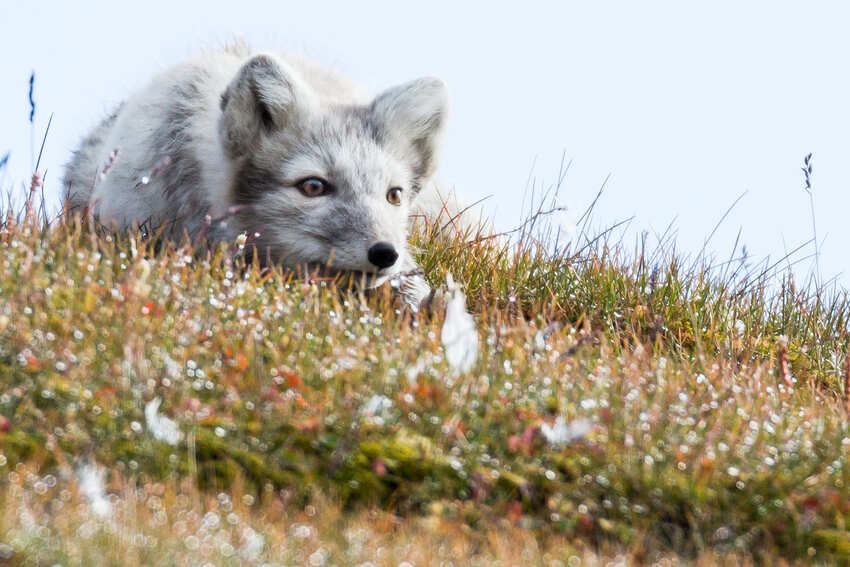
Interesting Facts About Tundra Plants
How do you deal with extremely cold temperatures and a short growing season? No problem for Arctic plant life. Read on and find out how they manage to thrive in the tundra, despite the cold climate and long winters. Our top five facts about polar vegetation:
They grow low.
Tundra plants grow in close proximity to each other and close to the ground. This protects them from harsh winds, ice and snowstorms.
They grow fast.
When the summer season is short, you gotta speed up your growth! These Arctic species develop much faster than other ones on the planet. Summers are short but magical, when the tundra is in full bloom!
Snow isn’t a problem.
Many tundra plants (such as the Arctic evergreen) can start their photosynthesis activity already under the springtime snow cover. Snow actually protects them against extreme cold temperatures. Early thaws are dangerous to many species, as they can get severely frost-damaged when another cold spell hits later.
Some like it on the rocks.
Organisms like lichens do not need soil to thrive. A bare rock is enough for them!
Adaptation is key.
Plant communities use the snow and ice cover as insulation to conserve heat. They also have smaller leaves to retain moisture (a larger leaf surface means higher water loss) and are able to perfectly use the short summers with 24-hour daylight to quickly grow flowers. The short growing season generally favors plant species that reproduce asexually as during the short summers it may be difficult to attract pollinators.
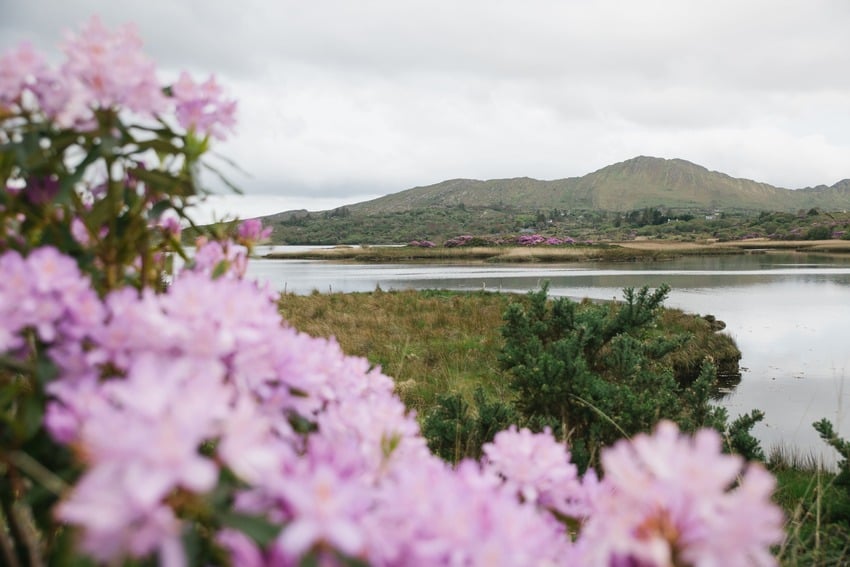
Adapting to Climate Change
How does climate change affect plant life? While declining sea ice is a great concern for marine wildlife, tundra plants seem to adapt better to warmer climates. Spreading their seeds through wind, birds and even floating ice, they are able to migrate to different climates that suit them better.
Another result of warming temperatures is the influx of taller plant species, which in turn promotes local species to grow taller.
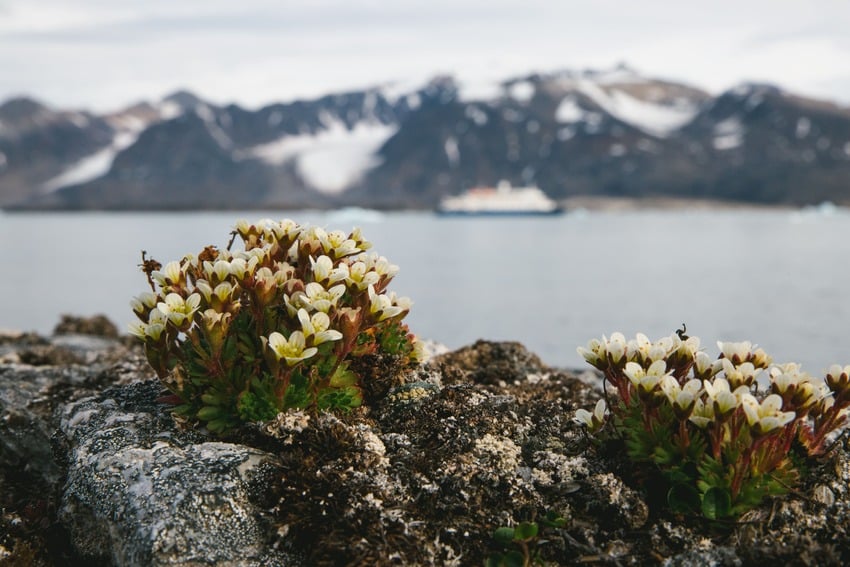
FAQ
What are the most common plants in the tundra?
Tundra vegetation needs to withstand the harsh environment of the north. For the most part, the tundra is a treeless zone featuring low shrubs, lichens and mosses. Arctic plants are adapted to this challenging environment and compensate for the lack of sun (short summers), extreme cold, permafrost and long winters. Commonly you can find various mosses, Labrador tea, Svalbard poppy, caribou moss and cotton grass.
What is an Arctic flower?
You may not expect a lot of flowering plants in the high north, but summers in the tundra of Svalbard are simply amazing! While the blooming season is short, you’ll enjoy an array of colors, with wildlife grazing amid the beautiful scenery. Among the flowering plant species you can find the snow buttercup (a small, yellow flower), Arctic poppy (with small, pale yellow flower heads), Arctic bell heather, mountain avens, moss campion, purple saxifrage and yellow marsh saxifrage (which has star shaped flowers).
How many types of plants are in the Arctic tundra?
The Arctic tundra biome consists of around 1,700 species. Among them, you can find dwarf shrubs, mosses, grasses, vascular plants (such as ferns) and many fungi, as well as many flowering plants. In comparison, only two species are found on the Antarctic continent (around the Antarctic Peninsula): Antarctic hair grass and Antarctic pearlwort.
